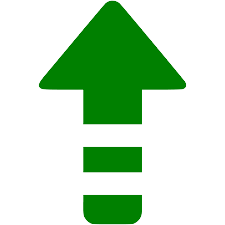

As you’ve probably spotted in case you’re a regular learner of this website, we’re giant fanatics of ebook illustration, particularly that from the shape’s golden age—the overdue 18th and nineteenth century—prior to photography took over because the dominant visual medium. However whilst photographs hugely supplanted illustrations in textual contentbooks, magazineazines, and informationpapers over the process the twentieth century, works of fiction, which were routinely published in lavishly illustrated editions, suddenly was the featuremuch less banks of phrases we all know nowadays. Regardless that image-heavy graphic novels and comic books have thrived in fresh a long time, the illustrated literary textual content is a rarity certainly.

Why did this alteration come about? “I actually don’t know,” writes Christopher Howse at The Telegraph, however he issues out that the technology of illustrated fiction for grown-ups finished “after the dying of the large Victorian novelists,” like Dickens and Trollope. Prior to grownup picture-books went out of fashion, several now-famous artists made careers as ebook illustrators. After we recall to mind the large names from the period, we recall to mind Aubrey Beardsley and Gustave Doré, either one of whom we’ve covered heavily right here. We generally tend now not to think about Irish artist Harry Clarke—a relative latecomer—however we will have to. Of the various incredible illustrations from noted works of literature we’ve featured right here, my favourite could be Clarke’s 1926 illustrations of Goethe’s Faust.

So out-there are a few of his illustrations, so pridefully eveningmarish and bizarre, one is tempted to fall again on that fairly sophomoric explanation for artwork we discover disturbing: perhaps he was once on medication! No longer that he’d want them to conjure up most of the photographs he did. His supply material is unusual sufficient (perhaps Goethe was once on medication!). After all, we will definitely name Clarke’s paintings hallucinatory, and that is going for his earlier, 1923 illustrations of Edgar Allan Poe’s Stories of Mystery and Imagination as neatly, of which you’ll see a couple of selection examinationples right here.

Dublin-born Clarke labored as a stained-glass artist in addition to an illustrator, and drew his inspiration from the earlier artwork nouveau aesthetic of Beardsley and others, including his personal rococo flourishes to the elongated paperwork and decorative patterns preferred by means of the ones artists. His glowering figures—together with person who appears to be like rather somewhat like Poe himself, on the best—go well with the feverish intensity of Poe’s international to consistent withfection. And prefer Poe, Clarke’s artwork generally thrived in a seductively darkish underneathinternational stuffed with ghouls and fiends. Either one of those professionalto-goths died younger, Poe underneath mysterious circumstances at age 40, Clarke of tuberculosis at 42.

Clarke’s illustrated edition of Poe contained 8 full-color plates and 24 black and white illustrations. The Irish artist additionally significantly illustrated editions of the fairy stories of Hans Christian Andersen and Charles In step withrault, with photographs that—as you could believe—are likely to terrify some sensitive children. You’ll purchase your personal edition of the Clarke-illustrated Poe right here, re-released in 2008 by means of Calla Press. And to peer all 24 of Clarke’s black and white plates, head over to 50 Watts.
Notice: An earlier version of this put up gave the impression on our website in 2016.
Related Content:
Gustave Doré’s Macabre Illustrations of Edgar Allan Poe’s “The Raven” (1884)
Aubrey Beardsley’s Macabre Illustrations of Edgar Allan Poe’s Brief Stories (1894)
Édouard Manet Illustrates Edgar Allan Poe’s The Raven, in a French Edition Translated by means of Stephane Mallarmé (1875)
Harry Clarke’s 1926 Illustrations of Goethe’s Faust: Artwork That Impressed the Psychedelic 60s
Oscar Wilde’s Play Salome Illustrated by means of Aubrey Beardsley in a Striking Modern Aesthetic (1894)
Josh Jones is a author and musician based totally in Durham, NC. Follow him at @jdmagness







